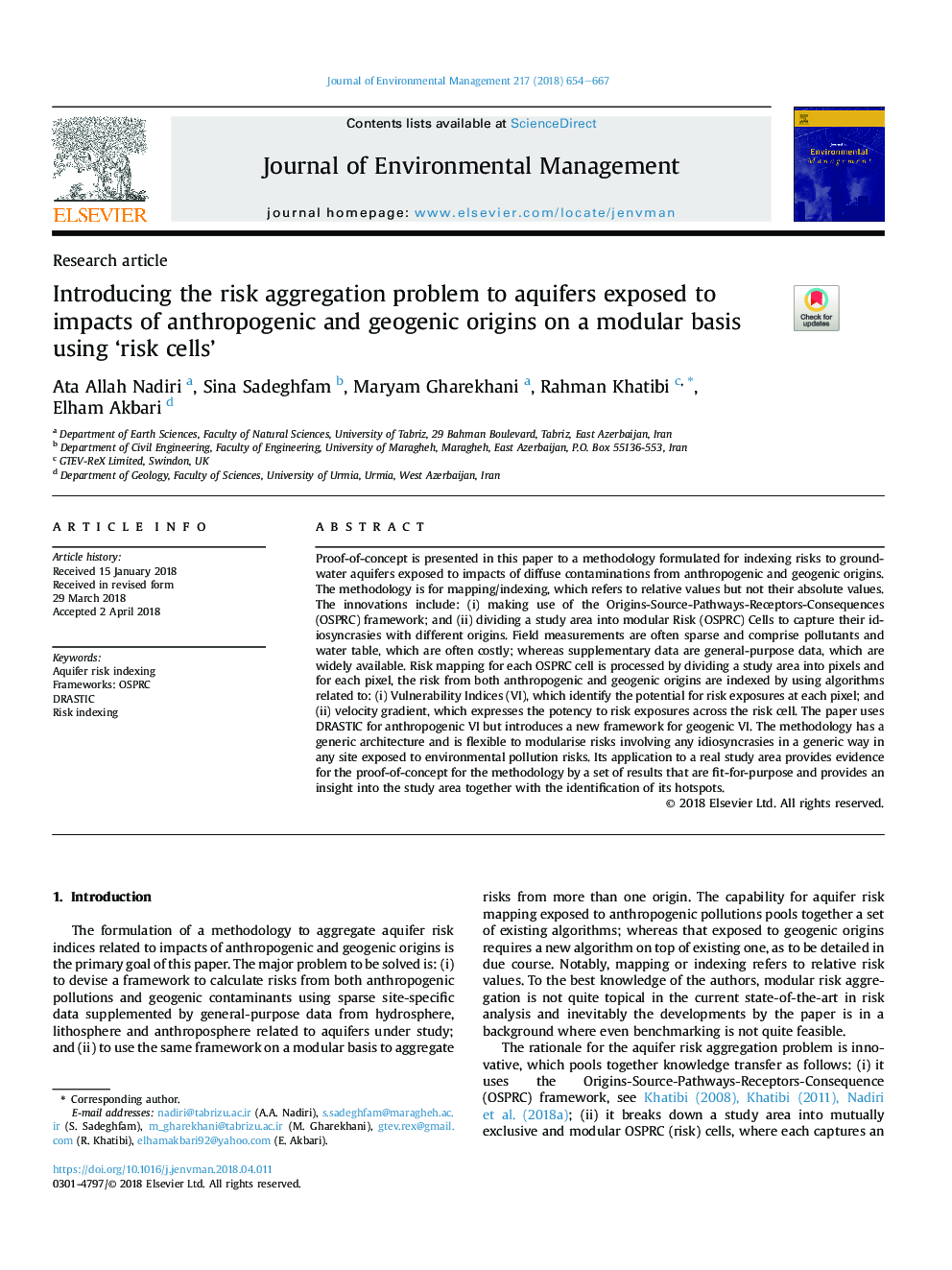| کد مقاله | کد نشریه | سال انتشار | مقاله انگلیسی | نسخه تمام متن |
|---|---|---|---|---|
| 7477658 | 1485201 | 2018 | 14 صفحه PDF | دانلود رایگان |
عنوان انگلیسی مقاله ISI
Introducing the risk aggregation problem to aquifers exposed to impacts of anthropogenic and geogenic origins on a modular basis using 'risk cells'
ترجمه فارسی عنوان
معرفی مسئله تجمع خطر به آبخوانها در معرض اثرات منشاء انسان شناسی و ژئوشیمیایی به صورت مدولار با استفاده از "سلولهای خطر"
دانلود مقاله + سفارش ترجمه
دانلود مقاله ISI انگلیسی
رایگان برای ایرانیان
کلمات کلیدی
موضوعات مرتبط
مهندسی و علوم پایه
مهندسی انرژی
انرژی های تجدید پذیر، توسعه پایدار و محیط زیست
چکیده انگلیسی
Proof-of-concept is presented in this paper to a methodology formulated for indexing risks to groundwater aquifers exposed to impacts of diffuse contaminations from anthropogenic and geogenic origins. The methodology is for mapping/indexing, which refers to relative values but not their absolute values. The innovations include: (i) making use of the Origins-Source-Pathways-Receptors-Consequences (OSPRC) framework; and (ii) dividing a study area into modular Risk (OSPRC) Cells to capture their idiosyncrasies with different origins. Field measurements are often sparse and comprise pollutants and water table, which are often costly; whereas supplementary data are general-purpose data, which are widely available. Risk mapping for each OSPRC cell is processed by dividing a study area into pixels and for each pixel, the risk from both anthropogenic and geogenic origins are indexed by using algorithms related to: (i) Vulnerability Indices (VI), which identify the potential for risk exposures at each pixel; and (ii) velocity gradient, which expresses the potency to risk exposures across the risk cell. The paper uses DRASTIC for anthropogenic VI but introduces a new framework for geogenic VI. The methodology has a generic architecture and is flexible to modularise risks involving any idiosyncrasies in a generic way in any site exposed to environmental pollution risks. Its application to a real study area provides evidence for the proof-of-concept for the methodology by a set of results that are fit-for-purpose and provides an insight into the study area together with the identification of its hotspots.
ناشر
Database: Elsevier - ScienceDirect (ساینس دایرکت)
Journal: Journal of Environmental Management - Volume 217, 1 July 2018, Pages 654-667
Journal: Journal of Environmental Management - Volume 217, 1 July 2018, Pages 654-667
نویسندگان
Ata Allah Nadiri, Sina Sadeghfam, Maryam Gharekhani, Rahman Khatibi, Elham Akbari,
